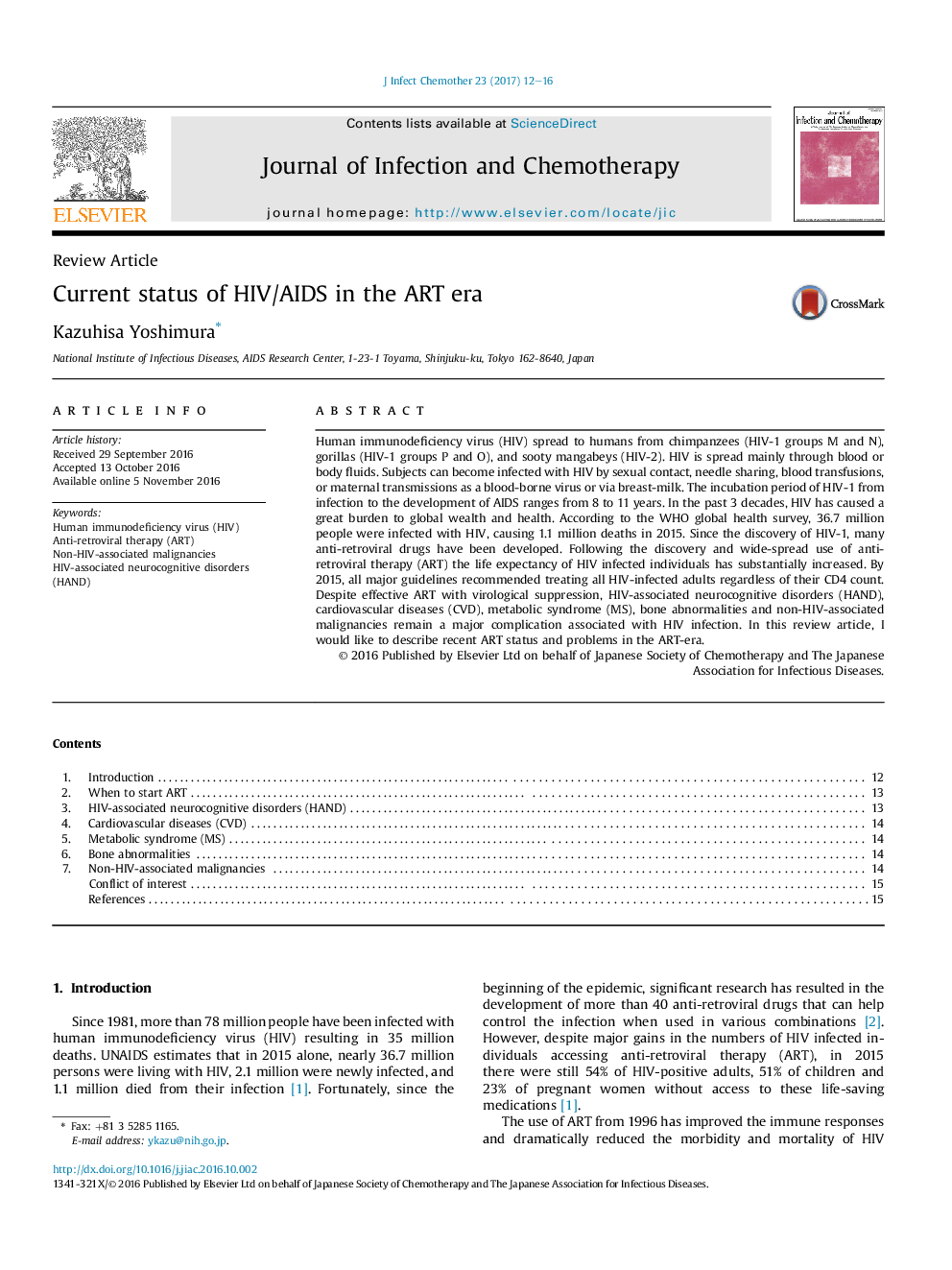| Article ID | Journal | Published Year | Pages | File Type |
|---|---|---|---|---|
| 5669001 | Journal of Infection and Chemotherapy | 2017 | 5 Pages |
Human immunodeficiency virus (HIV) spread to humans from chimpanzees (HIV-1 groups M and N), gorillas (HIV-1 groups P and O), and sooty mangabeys (HIV-2). HIV is spread mainly through blood or body fluids. Subjects can become infected with HIV by sexual contact, needle sharing, blood transfusions, or maternal transmissions as a blood-borne virus or via breast-milk. The incubation period of HIV-1 from infection to the development of AIDS ranges from 8 to 11 years. In the past 3 decades, HIV has caused a great burden to global wealth and health. According to the WHO global health survey, 36.7 million people were infected with HIV, causing 1.1 million deaths in 2015. Since the discovery of HIV-1, many anti-retroviral drugs have been developed. Following the discovery and wide-spread use of anti-retroviral therapy (ART) the life expectancy of HIV infected individuals has substantially increased. By 2015, all major guidelines recommended treating all HIV-infected adults regardless of their CD4 count. Despite effective ART with virological suppression, HIV-associated neurocognitive disorders (HAND), cardiovascular diseases (CVD), metabolic syndrome (MS), bone abnormalities and non-HIV-associated malignancies remain a major complication associated with HIV infection. In this review article, I would like to describe recent ART status and problems in the ART-era.
